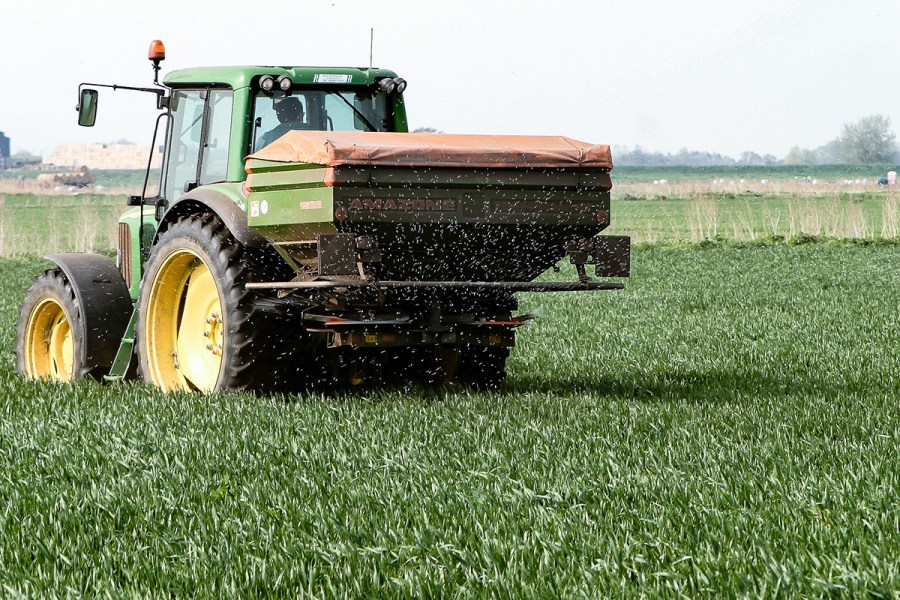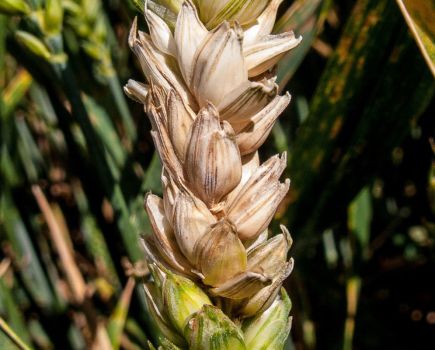With spring just around the corner, CPM seeks advice on nutrient planning to counteract deficiencies and optimise crop production this season.
“Unless you’ve measured the plant and had it analysed via a lab, you can’t second guess nutrition.” – DICK NEALE
By Charlotte Cunningham
As the spring tentatively rears its head, thoughts for many growers turn to nutrition plans. With nutrient management not only impacting crop yields but also the environmental sustainability of arable operations and economic profitability, getting it right is key.
But to plan efficiently for what the crop requires, it’s vital to know your starting point, explains Hutchinsons’ Dick Neale. “Pre-Christmas, crops were generally looking pretty good and had continued to grow well over the autumn and winter. Since then, we’ve had quite a lot of rain and there are damp fields out there now.
“That said, crops still look pretty good overall with signs of continued growth. At this point (mid-January), I can’t say I’ve seen any vast areas of nutrient deficiency. Lots of crops are still nice and green.
“Having said that, at this time of year, I always get asked questions about what growers should or shouldn’t be applying, but the answer is – I don’t know. The reason for that being unless you’ve measured the plant and had it analysed via a lab, then you can’t second guess it. So I would say that should be a priority this spring rather than just applying nutrition based on a standard plan.”
Looking more generally at what Hutchinsons’ crop monitoring has shown, Dick says while every farm is different, one nutrient in particular to hone in on during analysis is magnesium. “Based on our seven years of monitoring, it’s likely to be one of the biggest shortcomings in crops this year.
“Something important to remember about magnesium is that it’s a secondary macronutrient – not a trace element. Historically, it tends to be bundled in with a product that’s a mixture of manganese, zinc etc. This means you’re applying maybe 20/30/40g/ha of magnesium to a crop that’s looking for 30-50kg.”
While crops access magnesium quite readily from the soil, extreme weather patterns during recent years have hampered availability, notes Dick. “We’ve been going through these extreme weather events in the UK – it’s either very wet or tends to go very dry for a period of time.
“When this happens, the two things – from a nutritional perspective – that will run out of steam first when it goes very dry, are potassium and magnesium. So while you may have enough magnesium in your soil, it’s important to consider whether the plant can access it at the right time.
“This of course is in the spring when the plant really starts to grow. If we do go into an 8-10 week dry period, the crop isn’t likely to access the magnesium as freely as it wants. So if you’re inputting magnesium, it’s important to think about the product you’re using because something with 20g/ha just doesn’t cut it.”
As the crop grows larger in terms of its canopy, it’s also important to adjust the magnesium content in turn, adds Dick. “While a lot of the foliar, bottled products will suffice at GS30, they’re not enough at GS37-39, so that’s worth bearing in mind too as the season progresses.”
In terms of other nutrients, Dick says phosphate isn’t likely to be short, with the exception of those fields with poor indices, high calcium levels or high pH. “Look at your pH and consider how that might affect your P levels. However, P doesn’t wash down through the soil like other nutrients do – it’s locked away fairly well.
“Whereas potassium over winter will be one to watch, particularly where it’s been wet because it can be lost down the soil profile. Nitrogen is obviously another significant consideration nutrition-wise.
“This is because it’s been relatively warm over winter so soil microbiology will have converted some ammonium to nitrate. Ammonium won’t leach out – it’s positively charged – but nitrate is negatively charged so moves down the soil profile freely.”
SOIL TYPE INFLUENCE
While Dick says manganese isn’t generally a major concern, based on his monitoring, some regions and soils will be more prone to deficiencies than others. “We have a range of soils that have natural manganese deficiency, these are typically the sands that tend to go acid, the Fens and the light sands across Norfolk, for example,” he highlights. “But I think some farmers outside of these areas might be seeing more manganese deficiencies lately, largely due to more cultivations off the back of the 2023 season.
“The theory was that this would let more water through the soil. However, the challenge is soils become slightly open and fluffy making for a loose seedbed which can then lead to a manganese deficiency. Otherwise, general monitoring of manganese suggests that it’s not deficient in most circumstances.”
For growers who are hampered by manganese deficiencies, ensuring applied sources are readily available to the crop is vital, says Robert Hawkin of Fielder Nutrition. “It’s something we’re seeing more of.”
As a solution, he suggests the firm’s Mn350 product – based on a sulphate-nitrate mix – can deliver litre- for-litre 2.5x more manganese to the crop, making it an option for growers experiencing deficiencies this spring. “By treating plants with a high dose of readily-available manganese, farmers can correct any deficiencies quickly and easily before impacting crop yield.”
Dick continues by highlighting one of the major nutrients – one often overlooked – which is likely to impact crop performance this year – sulphur. “When we monitor crops either through grain, soil or tissue analysis, sulphur repeatedly comes up short,” he comments.
“This is for a number of reasons. Firstly, the atmospheric deposition isn’t there anymore, but sulphur is also a negatively charged anion, so it’s always sloshing around in a soil solution.
“This means as soils wet up and you start to get movement within the profile, sulphur will be taken down through the soil and away from the rooting zone. For this reason, I advise applying it every year; there’s just no argument.”
With the incredibly wet season just passed, Dick says sulphur was one of the biggest deficiencies he saw last year which resulted in poor nitrogen performance too. “Without sulphur, nitrogen won’t function.
“Unfortunately, sulphur deficiency is demonstrated by the crop going yellow and without an educated set of eyes looking at it, growers can presume this is down to a nitrogen shortage and apply more, which actually makes the situation even worse. You don’t require much sulphur – 30-50kg in cereals, slightly more in oilseed rape – but it’s really important.”
TISSUE ANALYSIS
In terms of next steps, Dick advises carrying out tissue analysis as soon as crops get moving again. “But it’s important to not test too early, though. At the moment, the crops look fine because they don’t need an awful lot of nutrition, and there’s clearly enough nutrition out there.
“So if we take a tissue analysis in February because we’re not busy and have the time to do it, we can see a false reading which can lead to underapplication. As soon as that crop starts to accelerate away – between GS30 and GS31 – it demands a lot more nutrition and that’s where the deficiencies start to appear because the availability can’t keep up with the growth of the plant.
“I’d generally recommend taking a tissue analysis at around GS30 at the earliest, and then another at GS31 just before you spray to ensure you have time to plan and make an adjustment if required.”
This article was taken from the latest issue of CPM.
For more articles like this, subscribe here.
Sign up for Crop Production Magazine’s FREE e-newsletter here.




